Test drive Ford Taurus since 2012 sedan
Universal Soldier
A ten -year -old American continues to serve in Russia.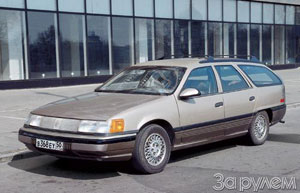 Mercury-Seiber debuted in the US market in February 1985. Moreover, at the same time, a four -door sedan and a station wagon - a stake in Wagon, which were equipped with three -liter V -shaped six -cylinder gasoline engines and automatic gearboxes, were born. In 1988, these front -wheel drive machines began to be equipped with engines with a working volume of 3.8 liters. A year later, and then in 1991, the appearance and interior of the car were slightly modified. From 1996 to this day, Mercury-Seiber of the second generation has been produced.
Mercury-Seiber debuted in the US market in February 1985. Moreover, at the same time, a four -door sedan and a station wagon - a stake in Wagon, which were equipped with three -liter V -shaped six -cylinder gasoline engines and automatic gearboxes, were born. In 1988, these front -wheel drive machines began to be equipped with engines with a working volume of 3.8 liters. A year later, and then in 1991, the appearance and interior of the car were slightly modified. From 1996 to this day, Mercury-Seiber of the second generation has been produced. The car of the Mercury brand is often on our roads. And perhaps that is why the choice of the American station wagon Mercury-Seiber as the hero of the heading of the second hands may seem unjustified, if not for one circumstance: after all, he is essentially nothing more than a popular Ford-Trus. It differs only by changed headlights, a rich interior decoration, and a different emblem on the radiator. Moreover, both cars are assembled at the same Ford factory.
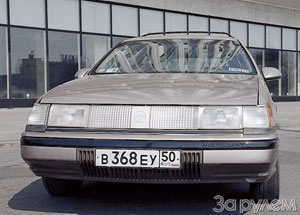 Why did this become possible? A few decades ago, the then chairman of the board, General Motors Alfred Sloan, put forward the fundamental principle of his corporation in the US market: the status of a man -buyer rises as he alternately becomes the owner of the Chevrolet, Pontiac, Buik and, finally, if the career has developed happily, reaches the peak -reaches the peak -reaches the peak -reaches the peak -reaches the peak Acaddishes Cadillac. Following General Motors, Ford Motor was forced to adopt the indicated scheme - competition! At the same time, Mercury models were supposed to fill the niche between Ford cars for the average buyer and a chic lingor, intended exclusively for the rich. However, the result was not too impressive. Popures of the classic of Soviet poetry, we can safely say that, speaking Mercury, we mean Ford. Almost twins were born: Mercury-Linx-Ford Escort, Mercury-Kuguar-Ford Tanterberd, Mercury-Seiber-Ford-Trus, etc. So you should not perceive our hero as a kind of auto-exploration, a wild model for which in You will not find spare parts in the afternoon with fire.
Why did this become possible? A few decades ago, the then chairman of the board, General Motors Alfred Sloan, put forward the fundamental principle of his corporation in the US market: the status of a man -buyer rises as he alternately becomes the owner of the Chevrolet, Pontiac, Buik and, finally, if the career has developed happily, reaches the peak -reaches the peak -reaches the peak -reaches the peak -reaches the peak Acaddishes Cadillac. Following General Motors, Ford Motor was forced to adopt the indicated scheme - competition! At the same time, Mercury models were supposed to fill the niche between Ford cars for the average buyer and a chic lingor, intended exclusively for the rich. However, the result was not too impressive. Popures of the classic of Soviet poetry, we can safely say that, speaking Mercury, we mean Ford. Almost twins were born: Mercury-Linx-Ford Escort, Mercury-Kuguar-Ford Tanterberd, Mercury-Seiber-Ford-Trus, etc. So you should not perceive our hero as a kind of auto-exploration, a wild model for which in You will not find spare parts in the afternoon with fire. 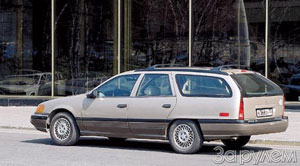 On our cramped editorial parking lot, the American station wagon looked very impressive. Despite the substantial size, the design of the car is so organic that even today, Siber looks quite modern. The paint is a golden metallic on a ten -year -old machine intact, there are no noticeable foci of corrosion, although Mercury has been operated in Russia for the fifth year. Under the hood is also cleanliness and order. The three -liter engine is located transversely. I can’t even believe that together with the car he ran without any repair of 190,000 km - it works cleanly, without interruptions, almost silently. Rather, it doesn’t even work, but is nicely rustling at idle. But the view of the car from below, from the pit, slightly reduces the euphoric mood. The elements of the suspension, and the bottom of the Mercury was pretty talked, although there is no end -to -end corrosion anywhere.
On our cramped editorial parking lot, the American station wagon looked very impressive. Despite the substantial size, the design of the car is so organic that even today, Siber looks quite modern. The paint is a golden metallic on a ten -year -old machine intact, there are no noticeable foci of corrosion, although Mercury has been operated in Russia for the fifth year. Under the hood is also cleanliness and order. The three -liter engine is located transversely. I can’t even believe that together with the car he ran without any repair of 190,000 km - it works cleanly, without interruptions, almost silently. Rather, it doesn’t even work, but is nicely rustling at idle. But the view of the car from below, from the pit, slightly reduces the euphoric mood. The elements of the suspension, and the bottom of the Mercury was pretty talked, although there is no end -to -end corrosion anywhere. 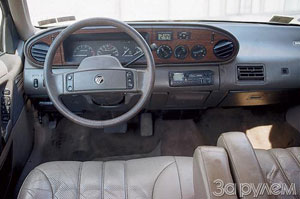 The salon, trimmed with light cream skin, amazes the expanse. Very wide front seats are standing back to each other. The armrests separating the riders can be raised and placed between the backs of the seats. Then a place for the third passenger appears ahead. Accordingly, the seat belts are provided for three. In order not to interfere under the feet, the control lever for an automatic four -speed gearbox is placed on the steering column. The driver can choose three options for the box - using all four gears, or only three lower ones, for example, in the city, or with the first - for the first - for driving on heavy roads.
The salon, trimmed with light cream skin, amazes the expanse. Very wide front seats are standing back to each other. The armrests separating the riders can be raised and placed between the backs of the seats. Then a place for the third passenger appears ahead. Accordingly, the seat belts are provided for three. In order not to interfere under the feet, the control lever for an automatic four -speed gearbox is placed on the steering column. The driver can choose three options for the box - using all four gears, or only three lower ones, for example, in the city, or with the first - for the first - for driving on heavy roads. As appropriate for a prestigious model, Mercury is equipped with air conditioning, electric windows, servo -drives of mirrors and front seat adjustments.
The dimensions of the rear sofa are such that on it, if desired, you can accommodate four. The most spacious domestic station wagon on the basis of the Volga simply fades in comparison with Mercury.
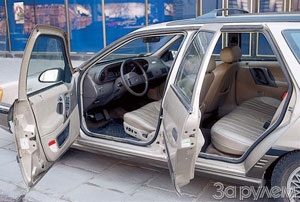 The size of the trunk is even more impressive, access to which is possible both through the back door and through the window in it - it opens independently. If you fold the rear seat entirely - and it, by the way, is also folded in parts - a grandiose cargo platform is obtained.
The size of the trunk is even more impressive, access to which is possible both through the back door and through the window in it - it opens independently. If you fold the rear seat entirely - and it, by the way, is also folded in parts - a grandiose cargo platform is obtained. Despite the impressive size, driving a car is completely easy and even pleasant. The overview is excellent, the driver is facilitated by the automatic gearbox and the power steering. You get used to the dimensions of the car quickly. To dubulate the American station wagon Sarai, as our drivers called the Volga dismissively, the tongue does not turn. At the move, Mercury, as befits a front -wheel drive, tenaciously holds the road, easily and obediently changes the course on a winding highway. Thanks to the loading of the leading front axle with a massive power unit, the car is stable and quite predictable on a wet and slippery road. Mercury’s cross -country ability is also on top, given that he is a family station wagon, not an alternate.
A soft suspension (front is like McExon, the back is an independent multi -link) silently swallows unevenness. Large 15-inch wheels also contribute to this. True, due to this softness when fast driving along our roads, the car body sways slightly, as if floating along the waves. But a strong lateral roll is prevented by the front and rear stabilizers of the pine stability.
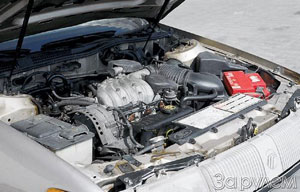 However, sitting behind the wheel of a solid station wagon, even a dashing unnoticed for himself begins to lead a car slowly and with a sense of dignity. In Moscow traffic jams, fenced off in the salon from the city noise, you turn on the air conditioner and the radio, you are in a hurry to think about your own and are not in a hurry to repeat the exploits of adherents of the sports style of driving, crawling from one row to another. He released the brake pedal - and the car rolled after the stream, pressed the brake - stopped. He arrived at the place of work, transferred the boxing lever to the parking position - that’s all the workplaces of the driver on the road, not counting the turns of the steering wheel, which can be rotated, as they say, with one finger.
However, sitting behind the wheel of a solid station wagon, even a dashing unnoticed for himself begins to lead a car slowly and with a sense of dignity. In Moscow traffic jams, fenced off in the salon from the city noise, you turn on the air conditioner and the radio, you are in a hurry to think about your own and are not in a hurry to repeat the exploits of adherents of the sports style of driving, crawling from one row to another. He released the brake pedal - and the car rolled after the stream, pressed the brake - stopped. He arrived at the place of work, transferred the boxing lever to the parking position - that’s all the workplaces of the driver on the road, not counting the turns of the steering wheel, which can be rotated, as they say, with one finger. However, be your desire, a burdened motor with a capacity of 142 liters. With. (4800 rpm) can show its character. It quickly spins, providing excellent acceleration. Surely, the dynamics of Mercury with a 3.8 liter engine will probably impress even more. It is curious that its power is not increased: the designers had a different goal - to improve the characterization of torque. So the maximum moment of the 3 -liter unit reaches 217 N.M at 3,000 rpm, at the engine 3.8 liters - 292 N.M at 2400 rpm.
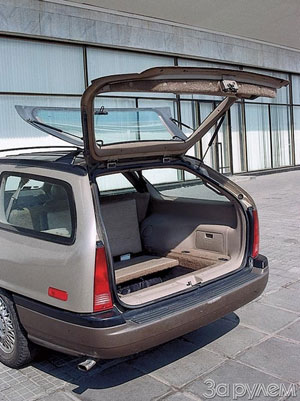 The noise level in the cabin at speed, say, 140 km/h is so small that passengers can talk without raising their voice. Effective brakes help to stop the car with a equipped mass of one and a half tons: in front - circular ventilated, from behind - drum. In general, the American station wagon, fast, roomy and comfortable, is very good for long trips. It provides even a cruise control system. Moreover, the fuel consumption on the suburban road is about 10 liters per 100 km, in the city, however, about 5 liters more.
The noise level in the cabin at speed, say, 140 km/h is so small that passengers can talk without raising their voice. Effective brakes help to stop the car with a equipped mass of one and a half tons: in front - circular ventilated, from behind - drum. In general, the American station wagon, fast, roomy and comfortable, is very good for long trips. It provides even a cruise control system. Moreover, the fuel consumption on the suburban road is about 10 liters per 100 km, in the city, however, about 5 liters more. There is a used 10-year-old station wagon Mercury-Seiber or his double-Ford Thus in the capital, depending on the fortune of about $ 7500, five-year-old-about $ 15,000. My colleague got the car for only $ 4500 for a reason: a dirty salon (fortunately, modern chemistry creates Miracles), broken headlights, torn upholstery and, most importantly, a faulty automatic machine. Bring Siblon to a combat state cost a penny, despite the fact that many details managed to buy cheaply at a landfill.
The main costs of the restoration and operation of the car are given in the table. More than two thousand green for 8,000 km of run are a lot, and this is without taking into account the fuel and lubricants and other little things. Another illustration that it does not happen cheaply. I managed to save a little, but it was spent pretty time and effort.
Nevertheless, living Siblust or Torus is a successful acquisition for someone who appreciates comfort, the space of the salon and needs a large amount of trunk. He is universal (not only because his body is called the station wagon) and is quite unpretentious, like a good soldier who honestly pulls his strap. We happened to get to know Ford - the double of Seybl, whose reckless owner of which was 80,000 km (!) He did nothing with the car. No, we do not advocate for such an attitude to the car, we only state a fact that confirms that in caring hands an American can serve for a long time.
On the hub of the steering wheel are located the control buttons cruise control.
In the luggage compartment - two folding seats, turning the Seiber into an eight (!) Car.
The power of the 1985 model engine is 142 liters. p., modern - with four valves on the cylinder - 207 l. With.
The luminous central ceiling is the main external difference between Mercury and the counterpart - Ford Torus.
Technical specifications
General data: number of places - 6/8; Equipped mass - 1485 kg; maximum speed - 185 km/h; The average operating consumption of fuel is 12.5 l/100 km; fuel supply - 71 l; Fuel - AI -93. Dimensions, mm: length - 4915; width - 1805; height - 1400; base - 2695; The track in front/back - 1565/1535; Road clearance - 140; trunk volume - 1290/2290; Radius of rotation - 6.1 m. Engine: six -cylinder V -shaped angle of cylinder collapse 60, with an electronic fuel injection system of Ford; working volume - 2979 cm; cylinder diameter and piston stroke - 88.9x80 mm; compression degree - 9.3; Power - 104 kW/142 l. With. at 4800 rpm; Maximum torque - 217 NM at 3000 rpm. Transmission: front wheel drive; gearbox - automatic four -speed; Transporting numbers: I - 2.77; II - 1.54; III - 1.00; IV - 0.69; Z.Kh. - 2.26; The main program is 3.37. Suspension: independent, with stabilizers of the anti -resistance, the front - such as McExeson, the back is multi -link. Brakes: hydraulic with a vacuum amplifier; Front - disk ventilated, rear - drum. Steering: rheck with a hydraulic wrap. Tire size: 205/65R15.
Sergey Osokin. Photo by Sergey Ivanov
A source: The magazine "Driving"







